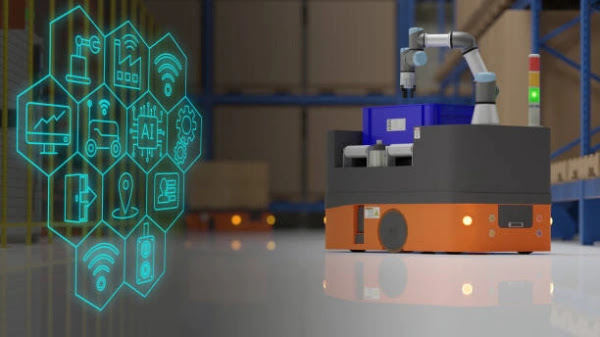Featured
- Get link
- X
- Other Apps
Smart Technology and Personal Fitness and Beauty
The Intersection of Smart Technology and Personal Fitness and Beauty: Revolutionizing Self-Care
Introduction:
In recent years, the proliferation of smart technology has profoundly
impacted various aspects of our lives, including personal fitness and beauty.
With the advent of smart devices, wearable gadgets, and advanced applications,
individuals can now access many tools and resources to enhance their self-care
routines. This article travels how smart technology has transformed the fields
of fitness and beauty, empowering individuals to achieve their health and
wellness goals like never before.
Smart Technology in Fitness:
a. Wearable Fitness Trackers: The rise of fitness trackers,
such as smartwatches and activity bands, has revolutionized how people monitor
their physical activities. These devices can track steps, distance, heart rate,
and sleep patterns and even provide personalized workout recommendations,
allowing users to understand their overall fitness levels and progress better.
b. Fitness Apps: Smartphones and tablets host various
fitness applications that provide tailored workout plans, exercise
demonstrations, nutrition tracking, and virtual personal training sessions.
These apps enable users to create personalized fitness routines and receive
real-time feedback, making fitness more accessible and engaging.
c. Virtual Fitness Communities: Online platforms and social
networks dedicated to fitness allow individuals to connect with like-minded
enthusiasts, participate in challenges, and share their progress. These
communities foster motivation, support, and healthy competition, encouraging
individuals to stay committed to their fitness goals.
Smart Technology in Beauty:
a. Skincare Analysis Devices: Smart skincare devices, such
as skin analyzers, use advanced sensors and algorithms to assess the skin's
condition, including moisture levels, pigmentation, and texture. These devices
provide personalized recommendations and track the effectiveness of skin care
products, enabling users to make informed decisions about their skincare
routines.
b. Virtual Makeup Try-On: Augmented reality (AR) technology
has made it possible for users to virtually try on makeup products before
purchasing them. Virtual makeup apps utilize facial recognition and AR overlays
to simulate various cosmetic products, allowing individuals to experiment with
different looks and find the perfect match.
c. Smart Mirrors: Innovative smart mirrors equipped with
embedded displays, cameras, and lighting systems provide an immersive beauty
experience. These mirrors offer personalized skincare routines, virtual fitness
classes, and step-by-step makeup tutorials, empowering users to optimize their
beauty routines and experiment with new styles.
The Benefits of Smart Technology in Fitness and Beauty:
a. Enhanced Personalization: Smart technology enables
personalized fitness and beauty experiences by collecting and analyzing user
data. This data-driven approach allows tailored recommendations and customized
routines that suit individual needs and preferences.
b. Improved Accountability: With the ability to track
progress, set goals, and receive real-time feedback, smart technology fosters a
sense of accountability. This motivates individuals to stay consistent with
their fitness and beauty regimens, leading to better results and increased
self-confidence.
c. Accessibility and Convenience: Smart devices and
applications directly bring fitness and beauty resources to the individual's
fingertips. Whether accessing workout routines, monitoring progress, or
experimenting with makeup looks, smart technology eliminates barriers and makes
self-care practices more convenient and accessible.
Challenges and Considerations:
a. Privacy and Data Security: The collection and storage of
personal health and beauty data raise concerns about privacy and data security.
Users must be cautious when sharing sensitive information and ensure that their
devices and apps have robust security measures to protect their data.
b. Reliance on Technology: While smart technology can be beneficial,
it is risky to become overly reliant. It is important to balance utilizing
technology and maintaining a holistic approach to fitness and beauty, including
other essential elements, such as human connection, mindful self-care, and
professional guidance.
c. User Education and Empowerment: As smart technology
evolves rapidly, user education becomes crucial. Individuals should know the
capabilities and limitations of different devices and apps, understand how to
interpret the data they receive and make informed decisions about incorporating
technology into their fitness and beauty routines.
Future Trends:
a. Artificial Intelligence (AI) Integration: The integration
of AI into fitness and beauty devices and applications holds tremendous
potential. AI processes can analyze vast amounts of data, provide personalized
insights, and even predict health and beauty trends, further enhancing the user
experience and optimizing results.
b. Virtual Reality (VR) Workouts: Virtual reality technology
can transform the fitness landscape by creating immersive workout experiences.
VR workouts offer interactive environments, virtual trainers, and gamified
elements, making exercising more engaging and enjoyable.
c. Biometric Monitoring: Advancements in biometric sensors
and wearables may enable real-time monitoring of various physiological markers,
such as blood weight, blood glucose, and stress levels. This data can give
individuals a careful consideration of their overall health and help them make
informed results regarding their fitness and beauty routines.
Conclusion:
Smart technology has significantly transformed personal
fitness and beauty, empowering individuals to take control of their health,
wellness, and self-expression. From wearable fitness trackers and virtual
fitness communities to skincare analyzers and virtual makeup try-on apps, smart
devices and applications have revolutionized how individuals approach their
fitness and beauty routines. As technology continues to change, we can expect
even more innovative solutions that cater to individuals' unique needs and
aspirations, inspiring them to lead healthier, more confident lives.
- Get link
- X
- Other Apps


